ChatGPT:
Parque Nacional de Doñana, located in southwestern Spain, is one of Europe’s most important wetlands and a UNESCO World Heritage Site. Covering around 540 square kilometers, it is known for its rich biodiversity, including marshes, dunes, forests, and lagoons. The park is home to a variety of wildlife, most notably the endangered Iberian lynx and the Spanish imperial eagle. It’s also a crucial stopover for migratory birds traveling between Europe and Africa.
The park is a blend of different ecosystems, ranging from the coastal sand dunes to pine forests and marshlands, which support a wide range of flora and fauna. Doñana is a haven for birdwatchers, with hundreds of species found in the park, particularly during migration seasons. Additionally, it’s an important area for conservation efforts, with ongoing projects to protect endangered species.
Visitors can explore the park through guided tours, often by foot, jeep, or boat, to experience its wildlife and diverse landscapes up close. The nearby town of El Rocío is also famous for its annual pilgrimage, adding cultural significance to the natural beauty of the region.
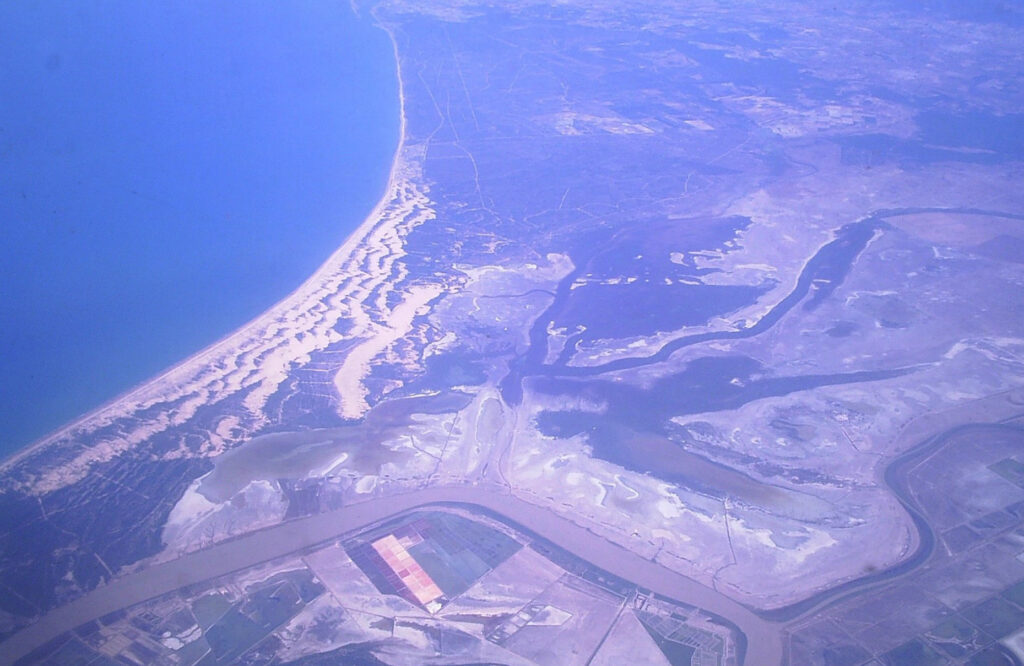
The origin of Parque Nacional de Doñana dates back to the 13th century when the area was part of the estate of the Duke of Medina Sidonia. The land, known for its marshes and wildlife, was used as royal hunting grounds for Spanish monarchs. It remained a private hunting reserve for centuries, contributing to its preservation and isolation from large-scale agricultural or urban development.
In the 19th century, the land passed into the hands of wealthy aristocrats, including the Duchess of Alba and later the Duke of Tarifa, who continued to use it as a hunting reserve. However, by the early 20th century, the area’s rich biodiversity began to attract the attention of naturalists and conservationists. Researchers recognized its value as a haven for endangered species, particularly migratory birds, and its importance in the European ecological landscape.
The push for formal protection began in the mid-20th century, led by Spanish conservationists and scientists, most notably José Antonio Valverde. Valverde, along with international support from organizations like the World Wildlife Fund (WWF), campaigned to save the wetlands from drainage and agricultural expansion. In 1969, thanks to these efforts, the Spanish government declared Doñana a national park, ensuring its protection from development and preserving its unique ecosystems.
Since then, Doñana has expanded through the acquisition of surrounding lands and the establishment of buffer zones, making it one of the largest protected areas in Spain. The park has also been the focus of continuous conservation efforts, particularly in response to threats like agricultural encroachment, water pollution, and climate change, which affect its delicate ecosystems. In 1980, it was designated a UNESCO World Heritage Site, further solidifying its global ecological significance. Over time, Doñana has become a symbol of Spain’s commitment to biodiversity and habitat conservation.
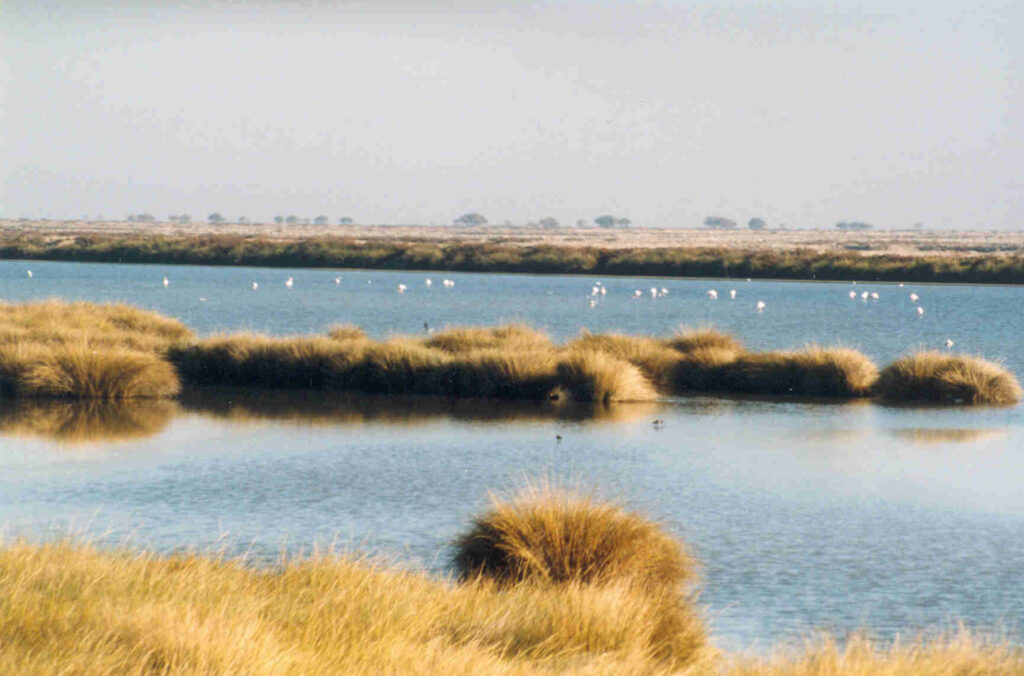
Parque Nacional de Doñana is renowned for its diverse ecosystems, which support a wide array of plants, wildlife, and geological features. Here’s a breakdown:
Plants
Doñana’s vegetation is shaped by its distinct ecosystems—marshes, forests, sand dunes, and beaches:
• Cork oak (Quercus suber) and stone pine (Pinus pinea): Found in the Mediterranean forest areas.
• Mastic tree (Pistacia lentiscus) and wild olive trees (Olea europaea): Grow in the scrublands.
• Eucalyptus groves: Non-native but introduced for forest management.
• Reeds (Phragmites australis) and rushes (Juncus spp.): Dominate the marshlands.
• Marram grass (Ammophila arenaria): Grows on sand dunes, helping stabilize them.
• Halophytic plants: Such as glasswort (Salicornia spp.), thrive in saline environments like the salt marshes.
• Dune flora: Includes species like juniper (Juniperus phoenicea) and yellow restharrow (Ononis natrix), adapted to sandy soils.
Wildlife
The park’s unique combination of habitats supports a rich diversity of fauna, including many endangered species:
• Mammals:
• Iberian lynx (Lynx pardinus): One of the world’s most endangered cats, the park is a key site for its conservation.
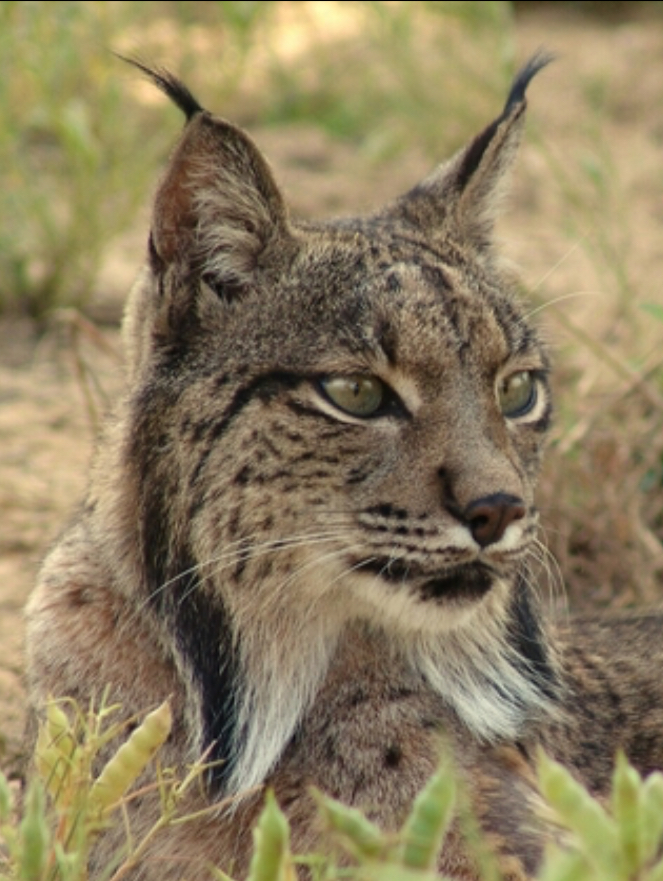
• Spanish imperial eagle (Aquila adalberti): Another critically endangered species found in Doñana.
• Red deer (Cervus elaphus), wild boar (Sus scrofa), and genet (Genetta genetta) are common.
• Roe deer (Capreolus capreolus) and Egyptian mongoose (Herpestes ichneumon) are also present.
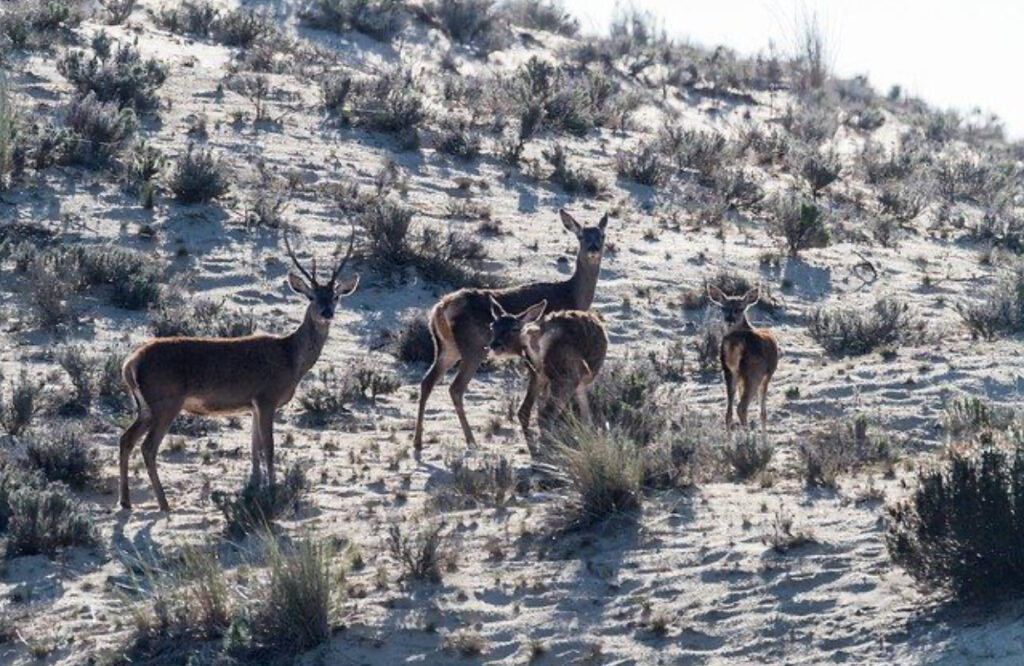
• Birds: The park is internationally famous for its birdlife, especially migratory species.
• Flamingos (Phoenicopterus roseus): Large colonies can be found in the park’s marshes.
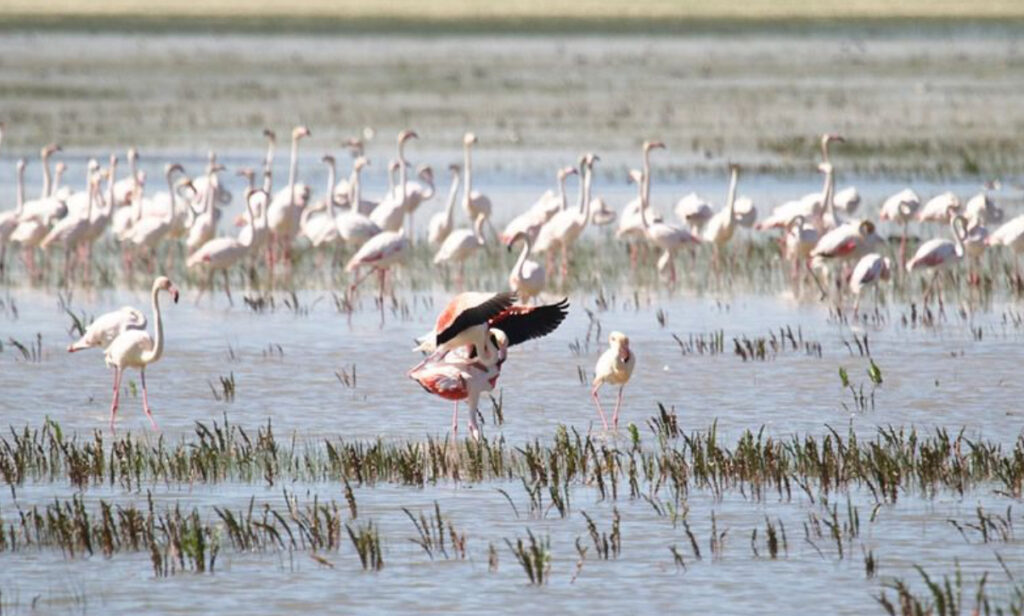
• Herons, storks, and spoonbills: Include species like the purple heron (Ardea purpurea) and Eurasian spoonbill (Platalea leucorodia).
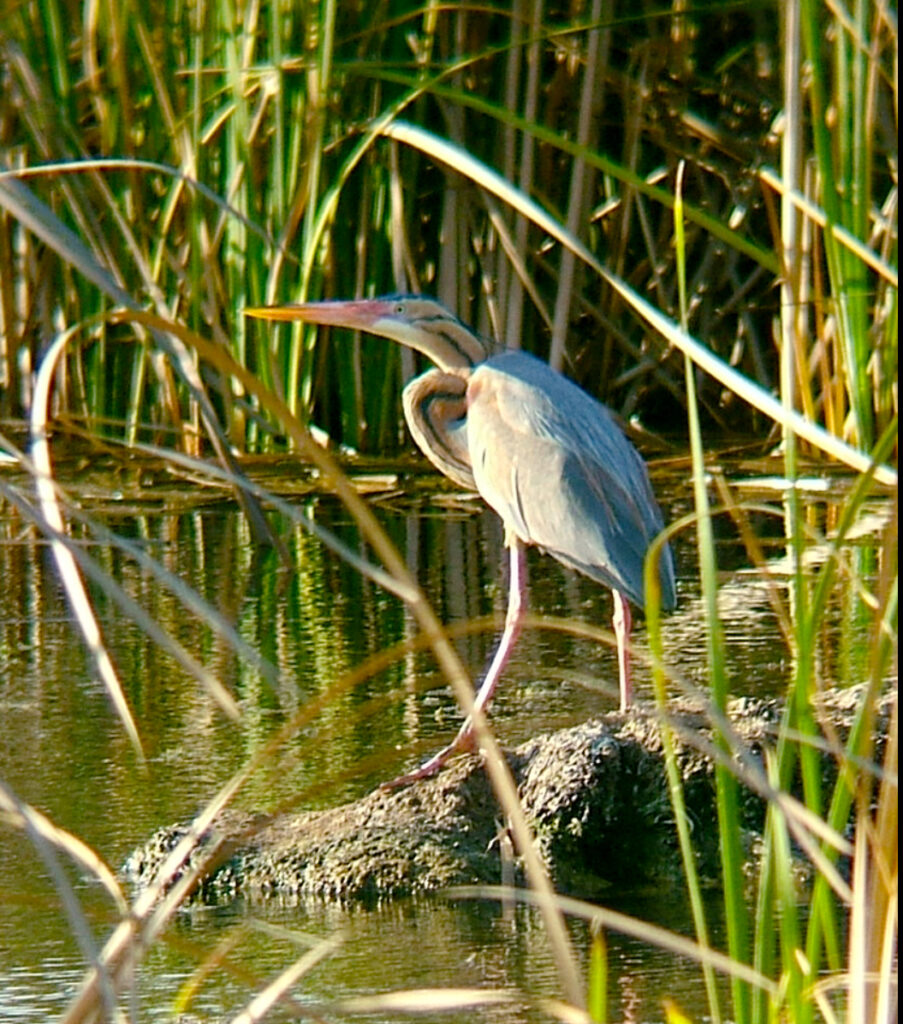
• Raptors: Include species like the marsh harrier (Circus aeruginosus).
• Waders: Such as avocets (Recurvirostra avosetta) and black-winged stilts (Himantopus himantopus), are common in wetland areas.
• Common crane (Grus grus): Winters in Doñana.
• Reptiles and amphibians:
• Mediterranean pond turtle (Mauremys leprosa) and spur-thighed tortoise (Testudo graeca).
• Natterjack toad (Epidalea calamita) and various species of frogs inhabit the wetlands.
• Fish: Several freshwater fish species thrive in the marshes, including eels (Anguilla anguilla).
Geological Features
Doñana’s landscape is a unique mix of geological formations:
• Marshlands (Marismas): These vast wetlands are formed by sediment deposition from the Guadalquivir River, creating seasonal floodplains. The marismas are the heart of Doñana’s ecosystem, flooding in winter and drying in summer.
• Sand dunes: Constantly shifting due to wind, these mobile and fossilized dunes form a significant part of Doñana. Some dunes migrate several meters each year.
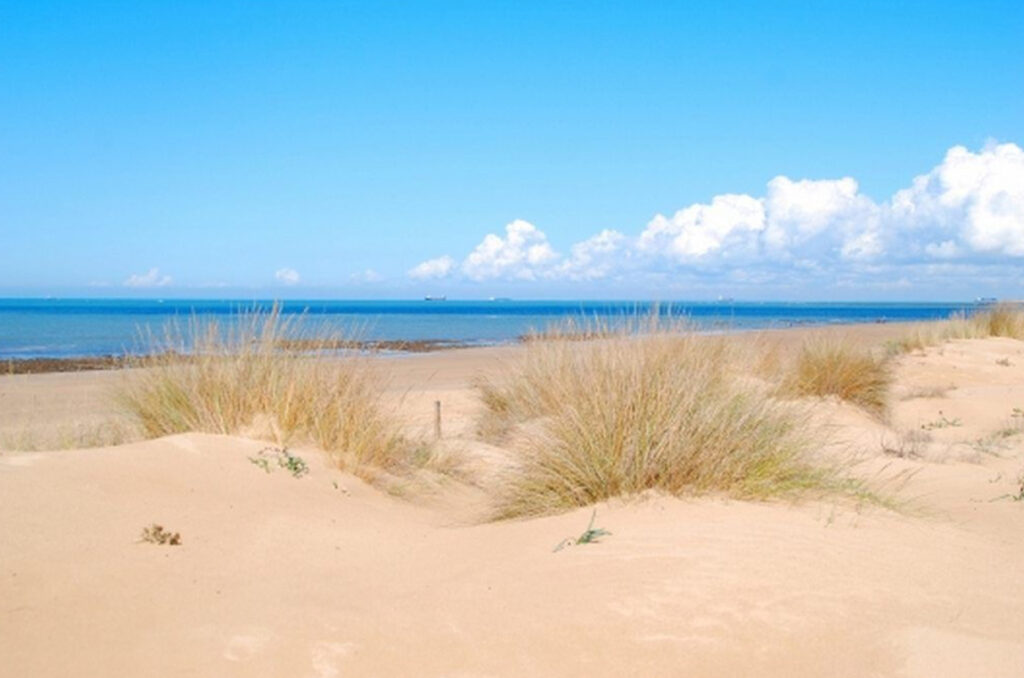
• Coastal beaches: Stretching along the Atlantic coastline, the beaches feature wide sandy shores, backed by dunes.
• Cliffs (Acantilados del Asperillo): These coastal cliffs, made of sedimentary rock, rise above the Atlantic Ocean and are some of the most impressive geological features in the region.
• Lagoons: Several small, seasonal freshwater lagoons dot the park, providing habitats for aquatic life during the rainy season.
• Paleodunes: Ancient, fossilized dunes are found inland, forming part of the park’s more stable landscapes.
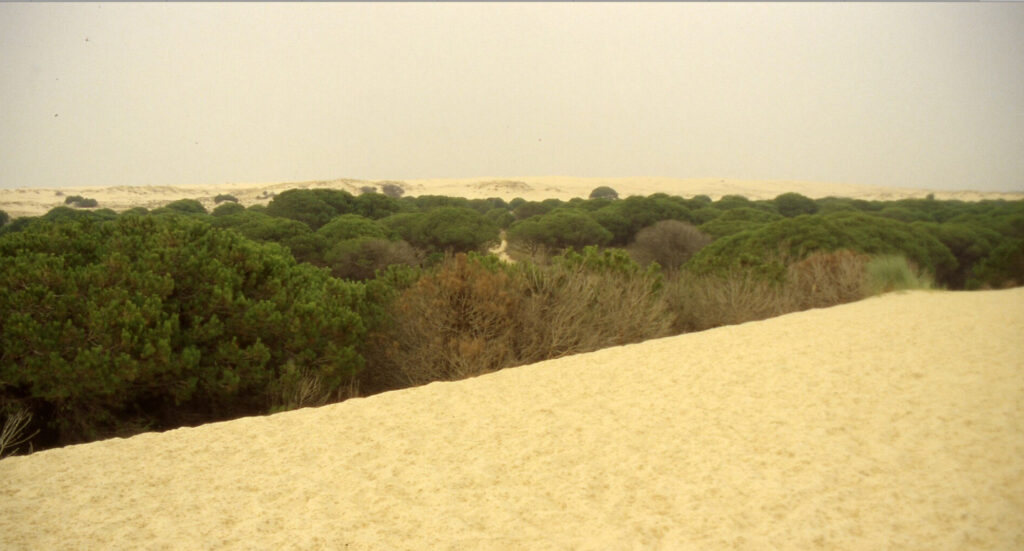
This combination of ecosystems makes Doñana a critical site for biodiversity and one of the most ecologically significant areas in Europe.
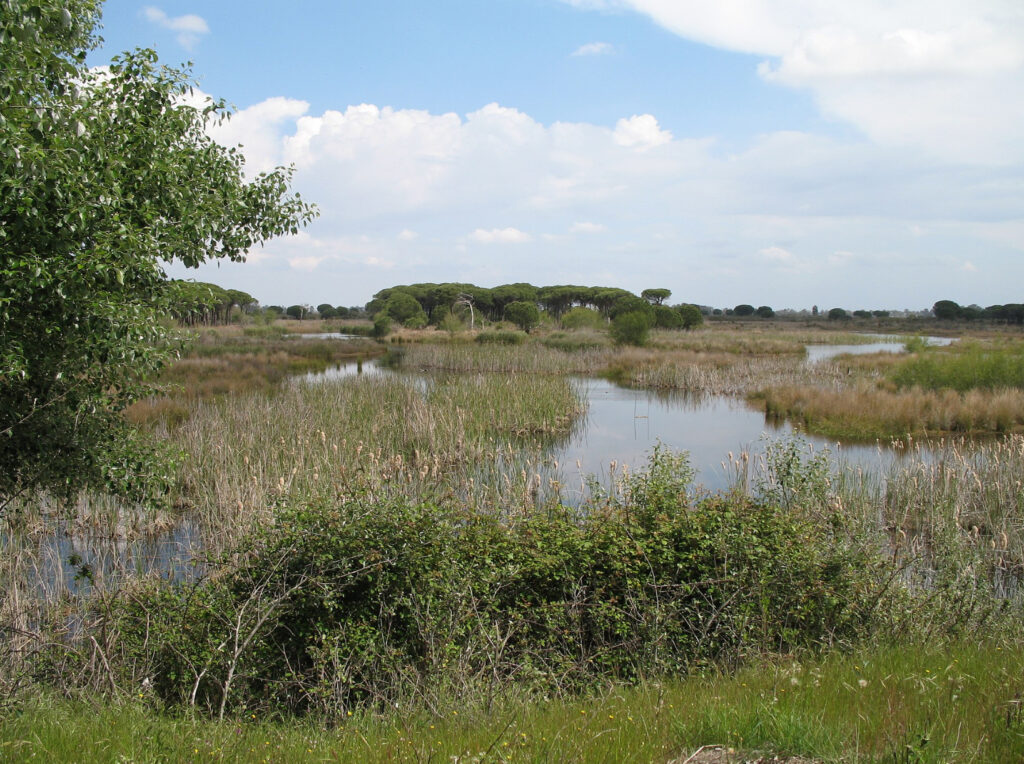
Parque Nacional de Doñana is primarily known for its natural beauty and wildlife, but there are several historical sites and tourist attractions in and around the park that reflect its cultural heritage and ecological significance. Here are some key highlights:
1. El Rocío
• What it is: A small village on the edge of Doñana, famous for its annual pilgrimage (Romería del Rocío), one of Spain’s largest religious festivals.
• Attractions: The village has a traditional Andalusian feel, with sandy streets and whitewashed houses. Its main attraction is the Ermita del Rocío, a shrine dedicated to the Virgin of El Rocío, which draws hundreds of thousands of pilgrims each year.
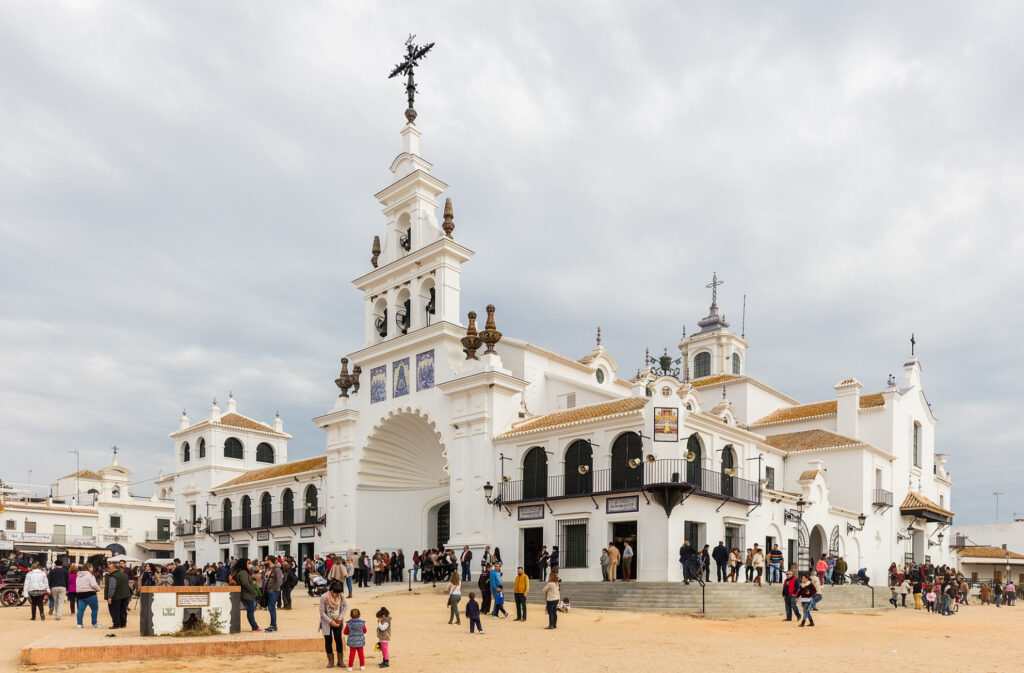
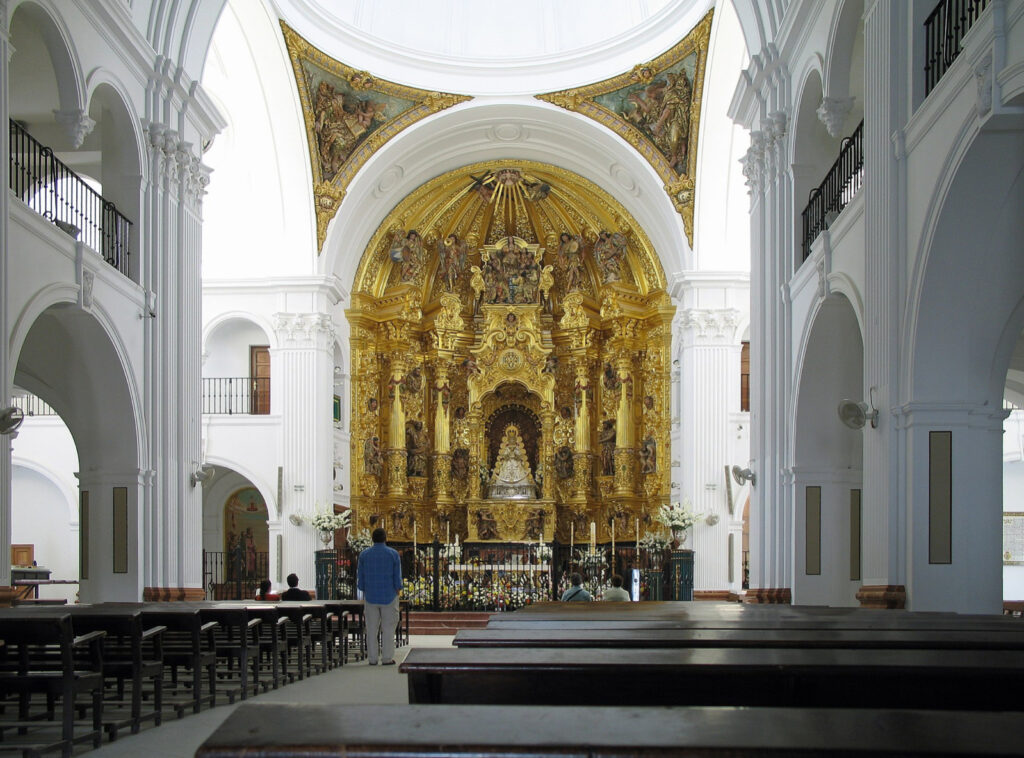
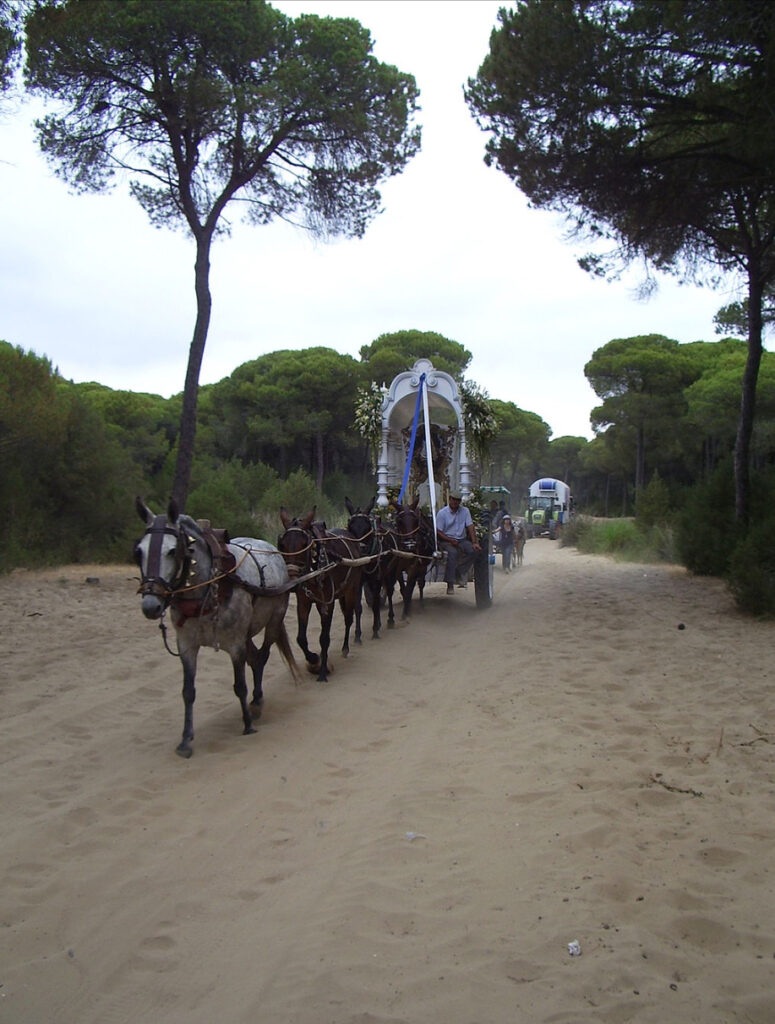
2. Palacio del Acebrón
• What it is: A historic mansion located within the park, originally built as a hunting lodge for a local aristocrat.
• Attractions: The palace now houses a visitor center that showcases exhibits about the traditional ways of life in the region, including the human history of the Doñana area, and its cultural relationship with the land and wildlife.
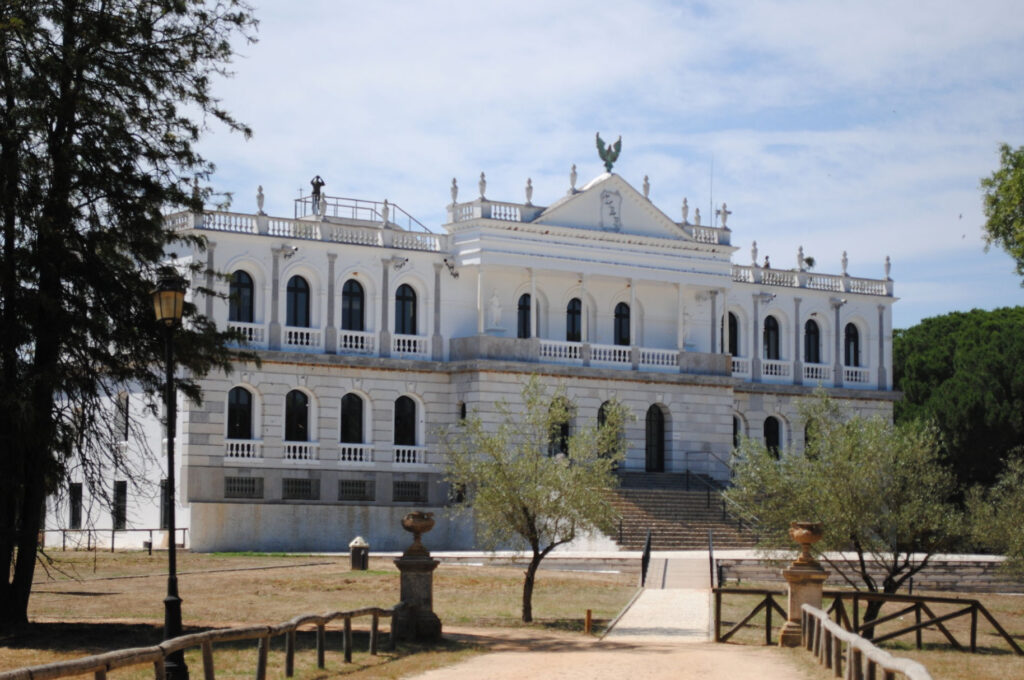
3. La Plancha Salt Flats
• What it is: Located near the village of Sanlúcar de Barrameda, the salt flats were historically used for salt production.
• Attractions: Visitors can explore the salt pans, which offer a glimpse into traditional salt-making methods and provide excellent opportunities for birdwatching, particularly for flamingos.
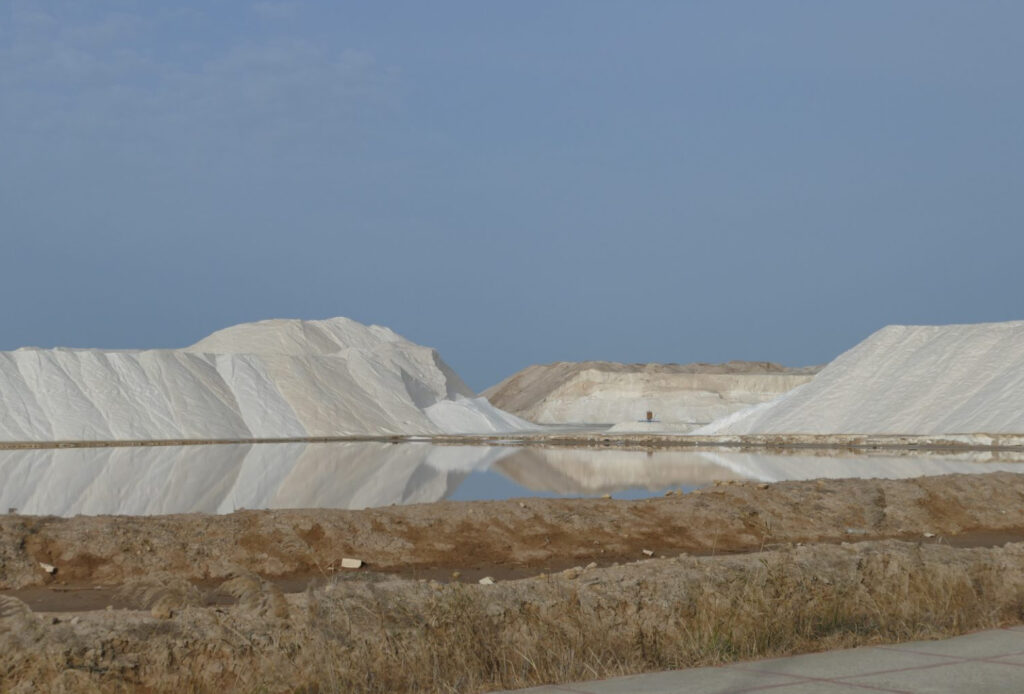
4. Torre Carbonero
• What it is: A 16th-century coastal watchtower used to defend the coast from pirate raids.
• Attractions: The Torre Carbonero is situated on the park’s coastline and offers views of the Atlantic Ocean and the surrounding sand dunes. It represents part of Spain’s historical defense system along the coast.
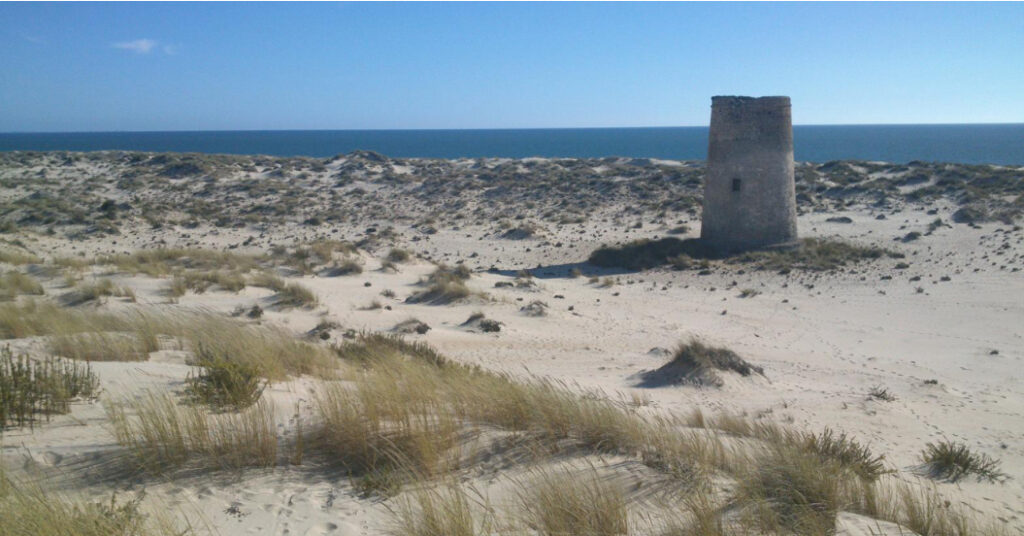
5. The Marshes of Guadalquivir River
• What it is: A key feature of the park’s landscape, these marshes are historically significant as part of the Guadalquivir River delta.
• Attractions: The marshes are not only essential for the park’s ecosystem but also have cultural significance, as this area has been inhabited by humans since prehistoric times, with traces of ancient settlements.
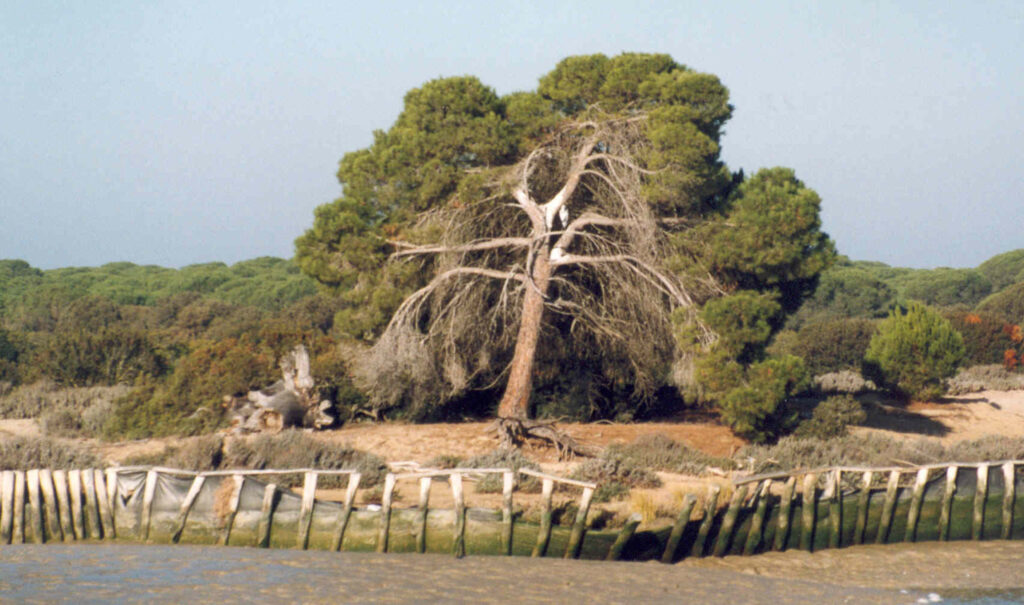
6. Faro de Chipiona
• What it is: The Chipiona Lighthouse, located on the northern edge of the park near Sanlúcar de Barrameda.
• Attractions: This 19th-century lighthouse is one of the tallest in Spain and provides panoramic views of the Doñana area and the Atlantic coastline.
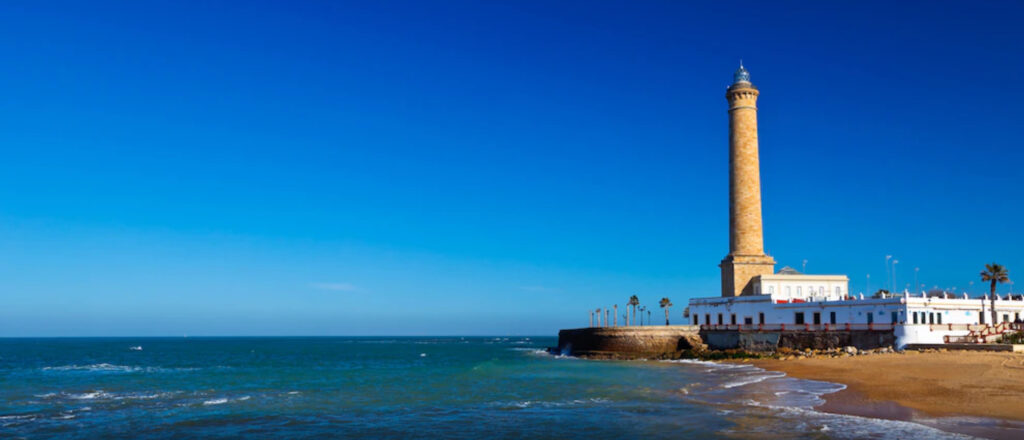
7. La Rocina Visitor Center
• What it is: A key visitor center located near El Rocío village, focused on the natural environment of the marshlands.
• Attractions: The center provides interpretive trails, observation platforms for birdwatching, and exhibits about Doñana’s unique ecosystems.
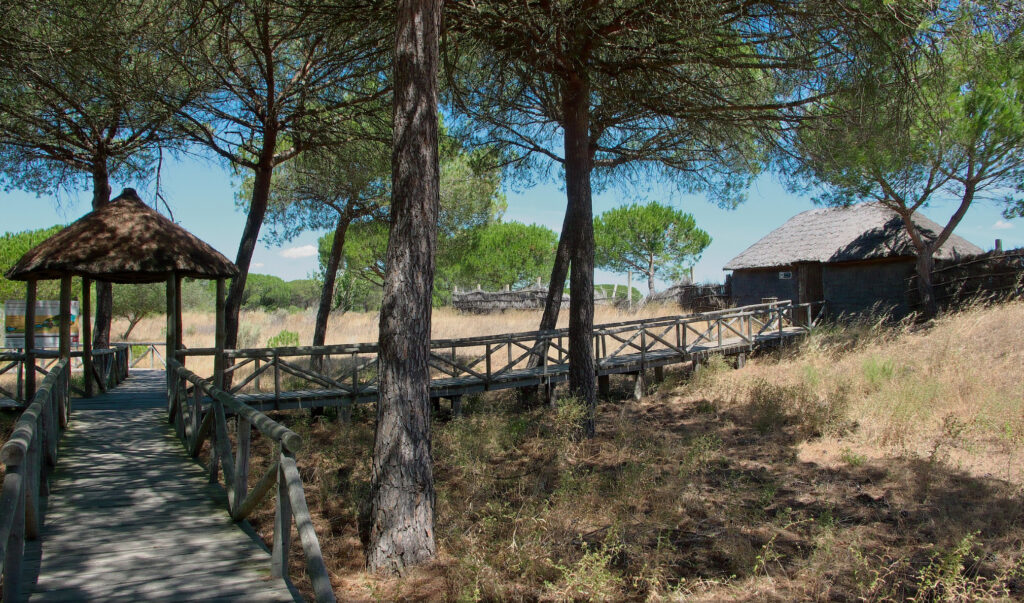
8. Acebuche Visitor Center
• What it is: One of the main visitor centers within the park.
• Attractions: The center offers educational displays about the flora and fauna of Doñana, guided tours, and birdwatching opportunities, with several trails leading into the park from the center.
9. Sanlúcar de Barrameda
• What it is: A historic town located at the northern entrance to the park, along the Guadalquivir River.
• Attractions: Sanlúcar is famous for its sherry production and seafood cuisine, as well as its historic sites, including Santiago Castle and the Church of Nuestra Señora de la O.
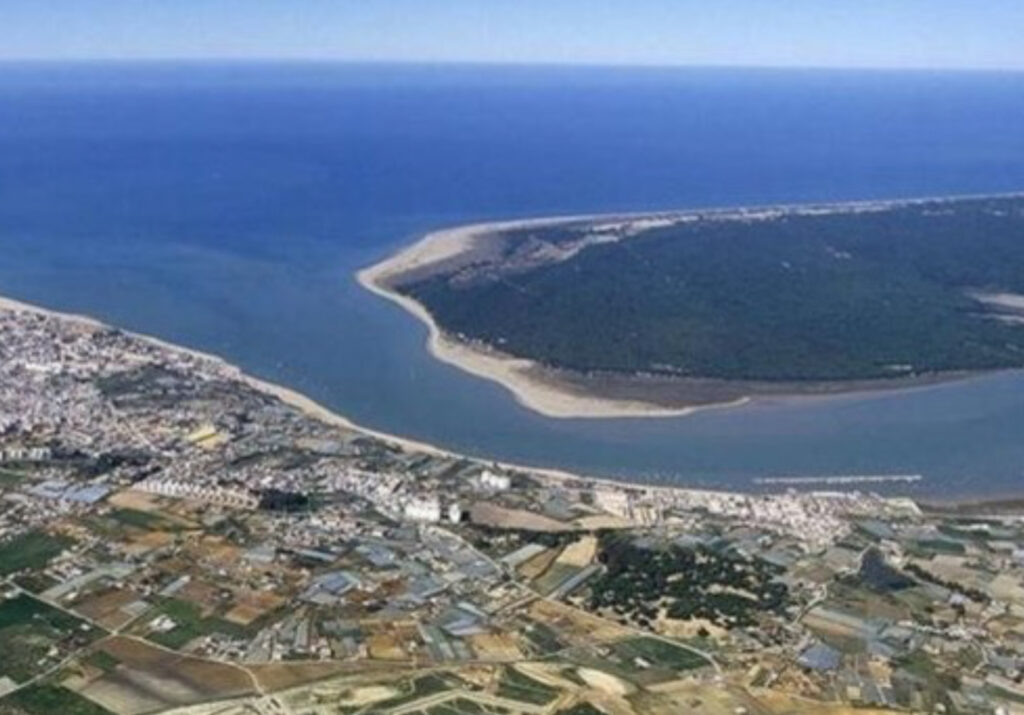
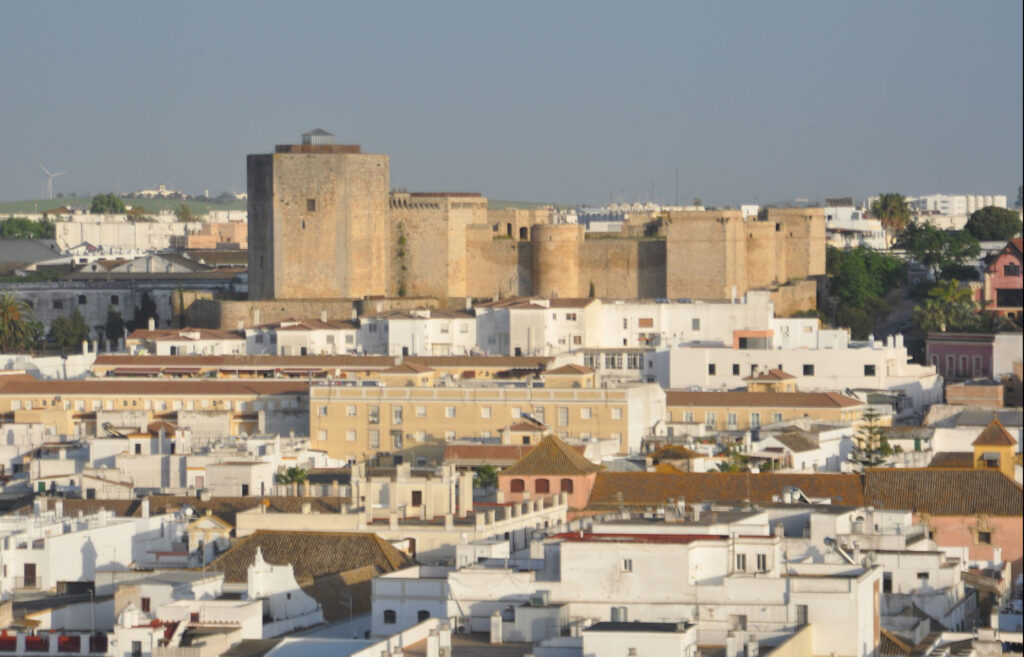
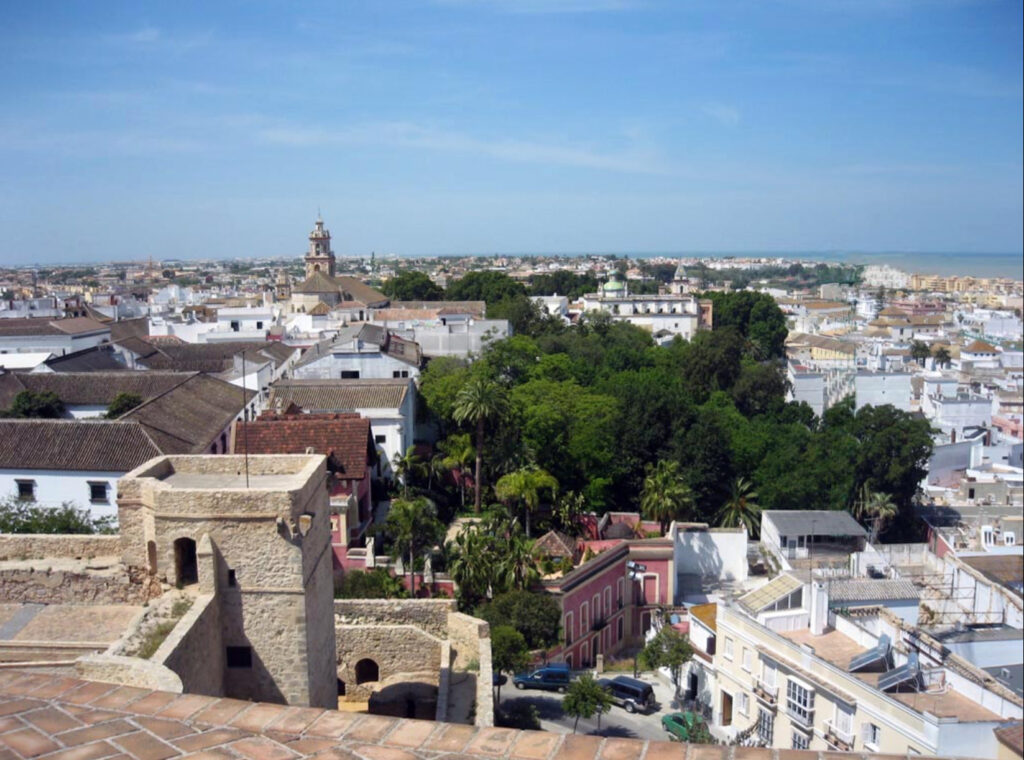
10. Isla Mayor
• What it is: A small town near the southeastern edge of the park, historically linked to rice cultivation.
• Attractions: Visitors can explore the traditional rice paddies and canals, which provide important habitats for birdlife, and learn about the region’s agricultural history.
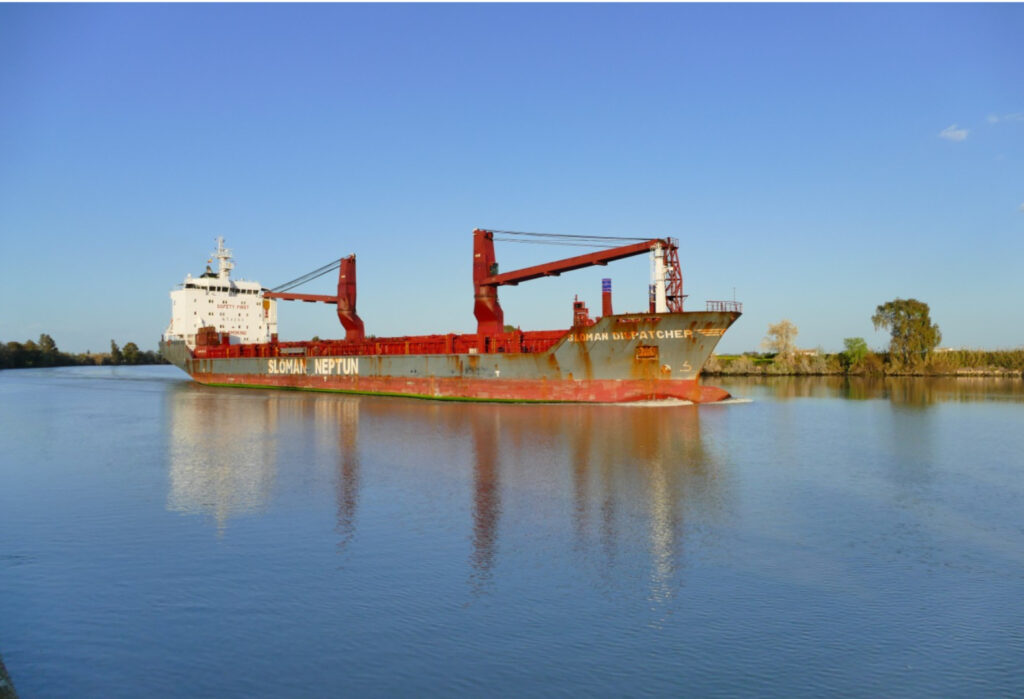
These sites offer a mix of historical, cultural, and ecological experiences, complementing the natural beauty of Parque Nacional de Doñana.
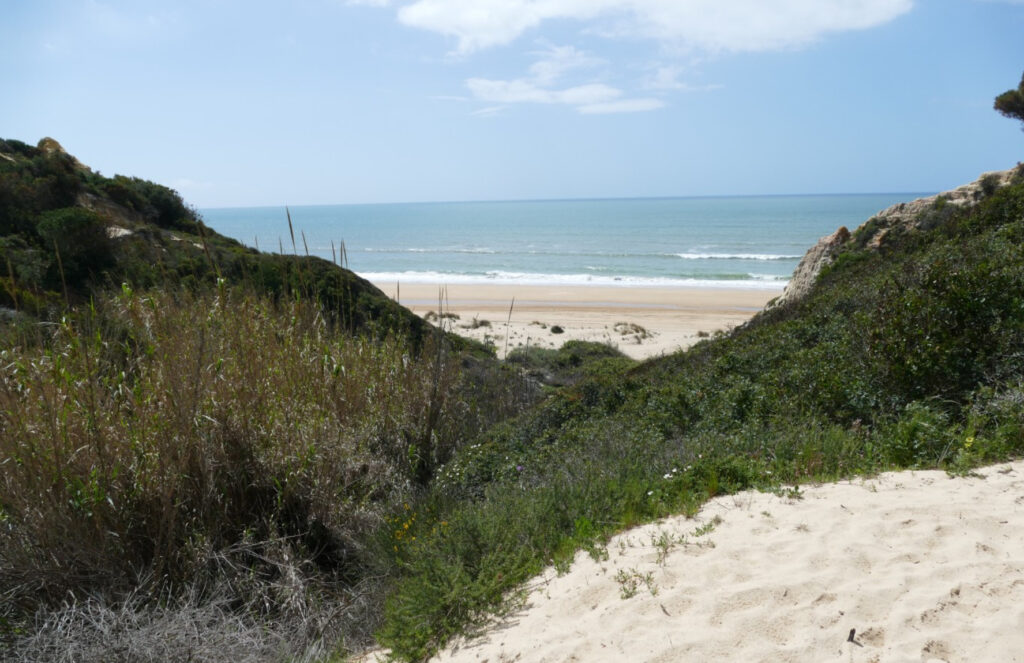
Here’s a one-day itinerary for exploring Parque Nacional de Doñana that balances nature walks, birdwatching, and enjoying local Andalusian cuisine:
Morning
1. Start at the Acebuche Visitor Center
• Time: 9:00 AM – 10:30 AM
Begin your day at the Acebuche Visitor Center, where you can get an introduction to Doñana’s ecosystems and wildlife through the center’s exhibits. Take one of the easy hiking trails from the center, like the Acebuche Trail, which loops around the pine forests and offers opportunities to spot various bird species. There are viewing platforms along the way that are ideal for birdwatching.
2. Hike the Sendero de la Rocina (Rocina Trail)
• Time: 10:30 AM – 12:00 PM
Drive or take a short ride to the nearby La Rocina Visitor Center. From here, take the Rocina Trail, an easy walk through marshland habitats. This trail is a great place to spot herons, egrets, and other wetland birds. The trail also features observation decks and hides for up-close birdwatching.
Lunch in El Rocío
3. Lunch at El Toruño in El Rocío
• Time: 12:30 PM – 2:00 PM
Head into El Rocío, a picturesque village with its sandy streets and whitewashed buildings. For lunch, visit El Toruño, a well-known restaurant serving traditional Andalusian cuisine. Try local specialties like:
• Sopa de mariscos (seafood soup)
• Gambas de Huelva (Huelva prawns)
• Carrillada de cerdo ibérico (Iberian pork cheek stew)
Make sure to pair your meal with manzanilla, the local sherry from nearby Sanlúcar de Barrameda.
Afternoon
4. Visit the Palacio del Acebrón
• Time: 2:30 PM – 3:30 PM
After lunch, take a short drive to the Palacio del Acebrón, a historical hunting lodge that now serves as a museum. Here, you can learn more about the cultural history of the park and its connection with the surrounding communities. Stroll around the surrounding woodland trails and enjoy the serene natural beauty.
5. Explore the Marshes and Birdwatching
• Time: 3:30 PM – 5:00 PM
Spend the late afternoon exploring some of the marshlands near El Rocío. The marshes around La Rocina and Las Marismas del Rocío are excellent spots for birdwatching, especially during migration seasons. Depending on the time of year, you might see large flocks of flamingos, spoonbills, and other migratory birds. Bring binoculars for better views of the wildlife.
Late Afternoon/Evening
6. Relax with Coffee in El Rocío
• Time: 5:00 PM – 6:00 PM
Before heading back, stop for a coffee break at one of the cafés in El Rocío, such as Bar Restaurante La Palma. Enjoy the tranquil atmosphere and the view of the marshes as you relax.
Optional Sunset Excursion
7. Sunset at the Beach (Optional)
• Time: 6:30 PM – 8:00 PM
If you have time, head to the nearby coast at Matalascañas Beach to enjoy a walk along the sand dunes and the Atlantic coastline. The area is known for its beautiful sunsets, with views over the sea and dunes.
Dinner
8. Dinner in Sanlúcar de Barrameda
• Time: 8:00 PM – 9:30 PM
On your way out of the park, stop at Sanlúcar de Barrameda, a charming town famous for its seafood and sherry. Visit Casa Bigote, a renowned seafood restaurant, and try dishes like:
• Langostinos de Sanlúcar (Sanlúcar prawns)
• Tortillitas de camarones (shrimp fritters)
• Rabo de toro (bull’s tail stew)
End your day with a glass of manzanilla sherry and enjoy the coastal charm of this town before heading back.
This itinerary provides a good mix of easy hiking, wildlife observation, cultural sites, and an opportunity to savor the local Andalusian cuisine, all while exploring the natural beauty of Doñana.

